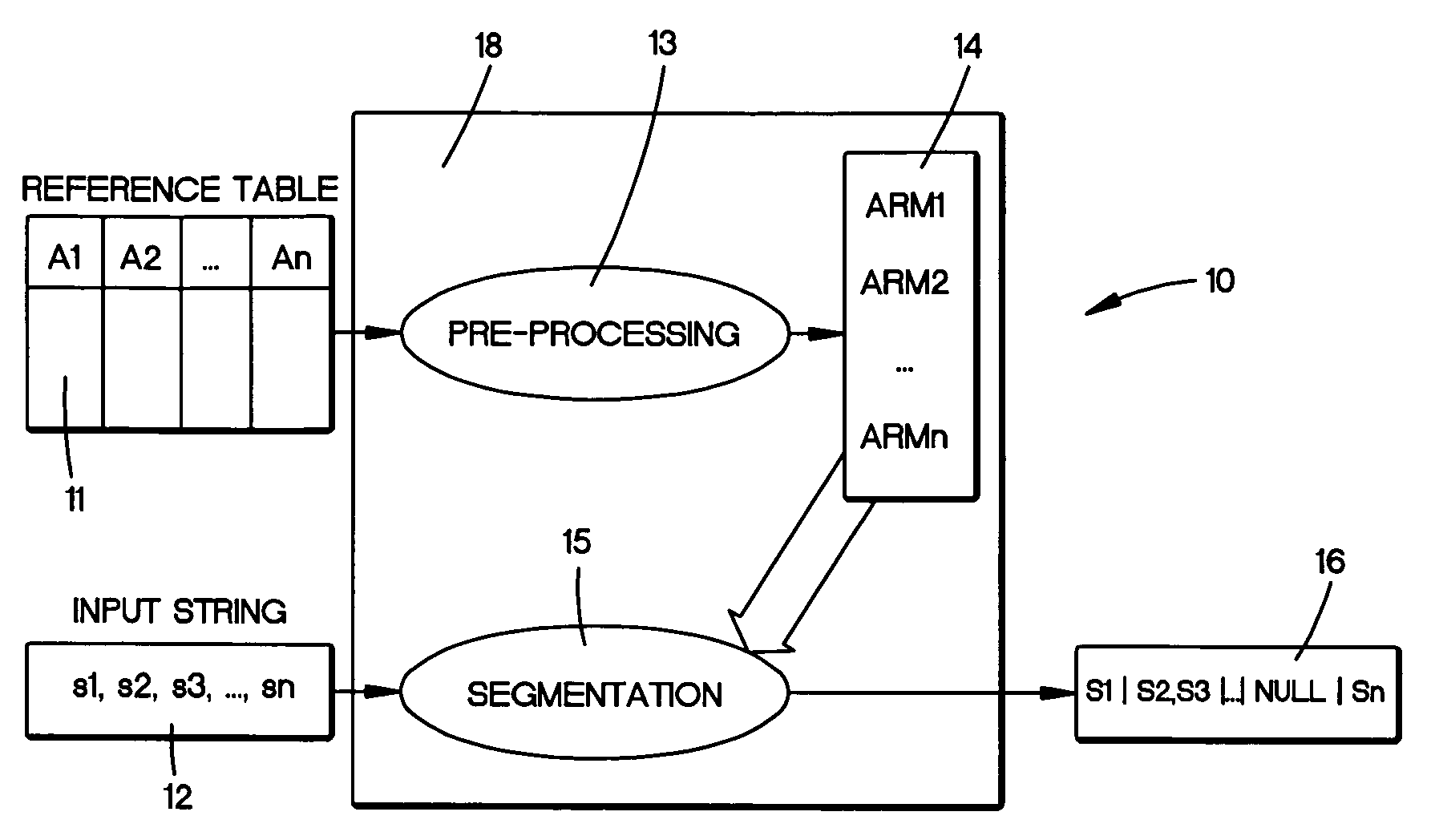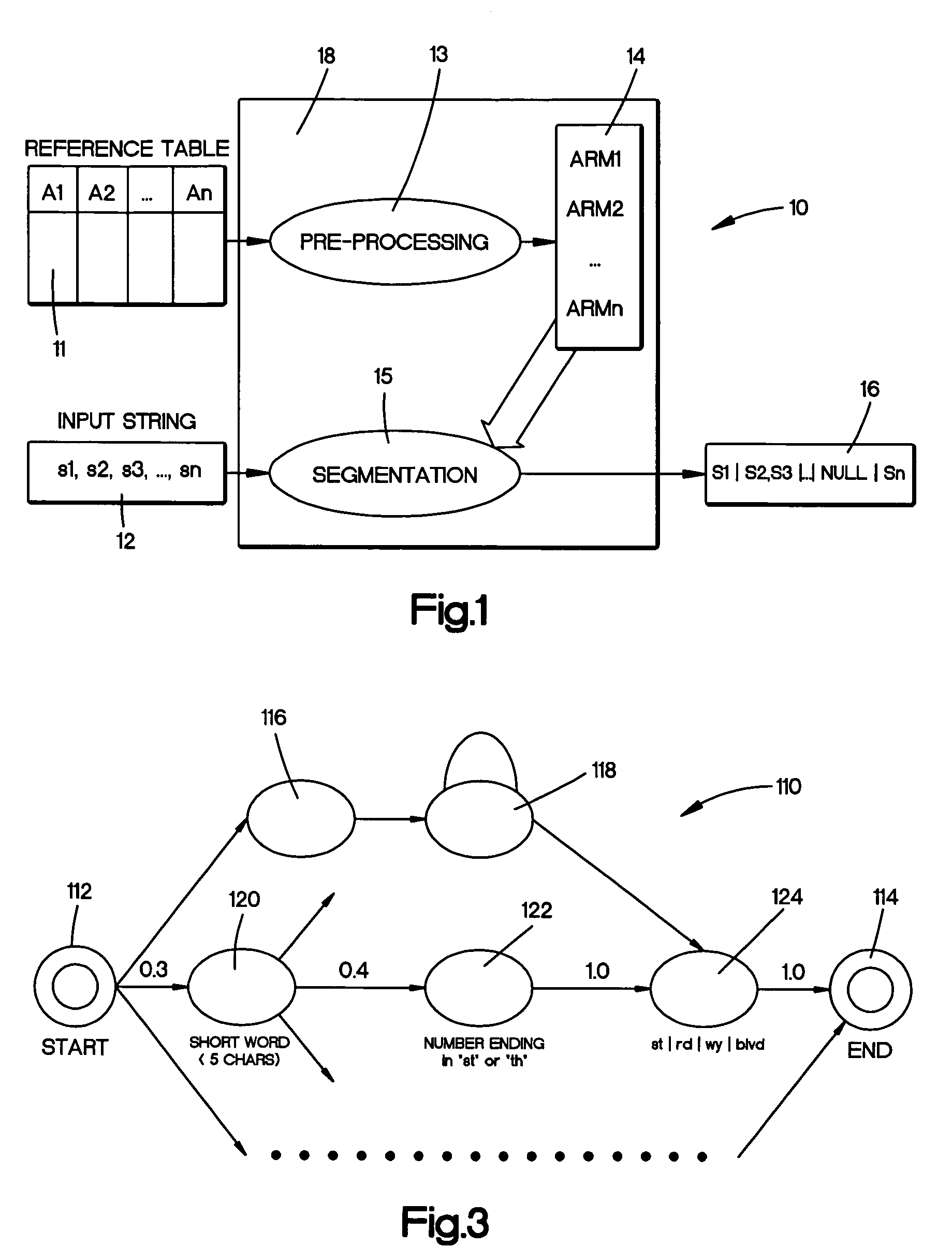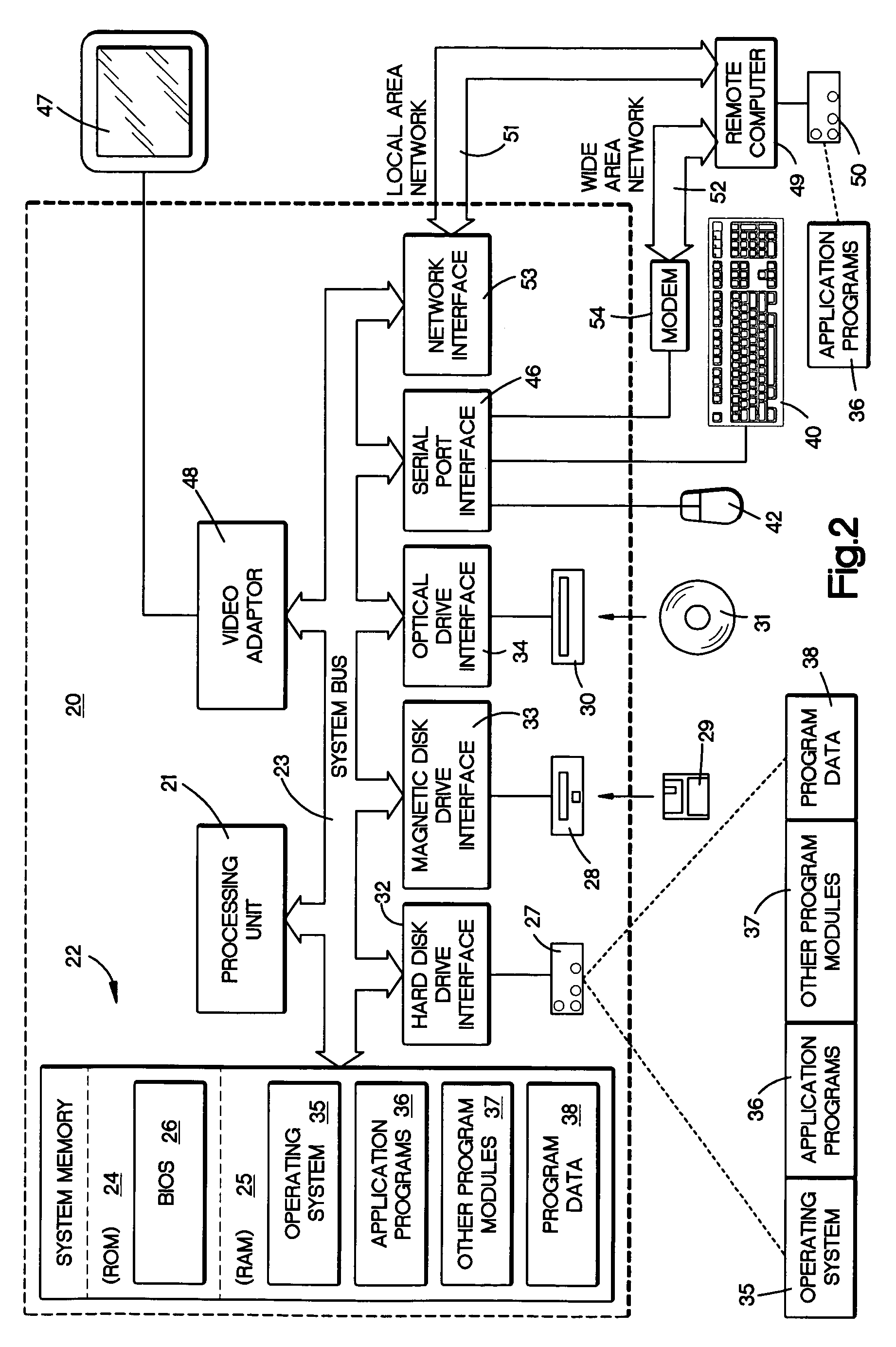Segmentation of strings into structured records
a structured record and string technology, applied in the field of automatic segmentation of data into segments, can solve the problems of difficult to obtain training data, difficult for a human to be comprehensive, and further exacerbated problems
- Summary
- Abstract
- Description
- Claims
- Application Information
AI Technical Summary
Benefits of technology
Problems solved by technology
Method used
Image
Examples
Embodiment Construction
[0021]Consider the data contained in a representative customer table (Table 1) of data that has been stored in a data warehouse. The data is segmented into different attributes that are labeled in column headings. The entries of the first few representative rows are clean data in the sense that the data contained therein is presumed accurate. A challenge of the invention is to scan an input string and properly evaluate its contents for segmentation and insertion into the Table 1 representation.
[0022]
TABLE 1ZipRecNoNameAddress 1CityStateCode0001011Jones'89 Elm StPerryNew18008BakeryYork0001012Al Smith10 Jackson blvd.TimbuktooAZ880450001013WalMart20205 S. RandallMadisonWI53715Ave.
[0023]A system 10 for automatic segmentation is depicted in FIGS. 1 and 7. Inputs to the system are a reference table 11 containing data similar to the data of Table 1 above and an input string 12 which must be segmented and added as a record to the customer table. The system analyses these two inputs in two p...
PUM
 Login to View More
Login to View More Abstract
Description
Claims
Application Information
 Login to View More
Login to View More - R&D
- Intellectual Property
- Life Sciences
- Materials
- Tech Scout
- Unparalleled Data Quality
- Higher Quality Content
- 60% Fewer Hallucinations
Browse by: Latest US Patents, China's latest patents, Technical Efficacy Thesaurus, Application Domain, Technology Topic, Popular Technical Reports.
© 2025 PatSnap. All rights reserved.Legal|Privacy policy|Modern Slavery Act Transparency Statement|Sitemap|About US| Contact US: help@patsnap.com



